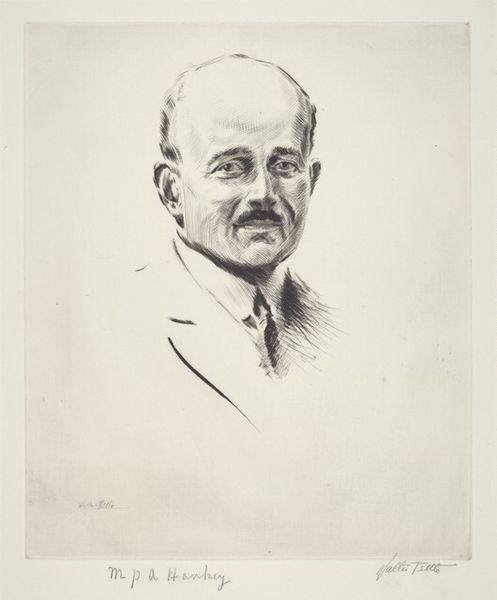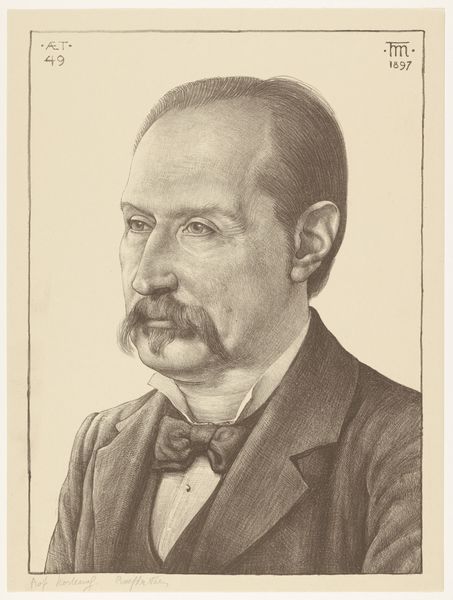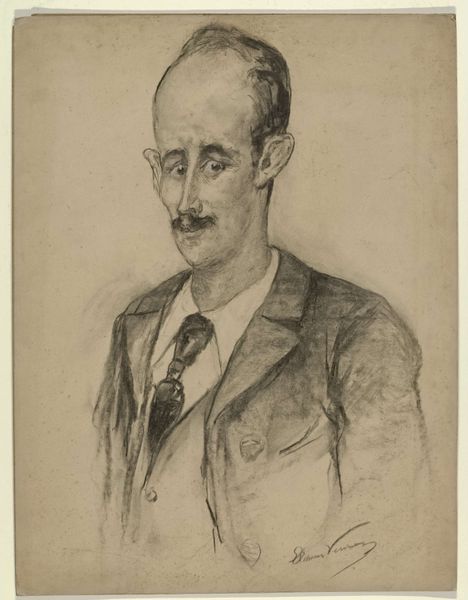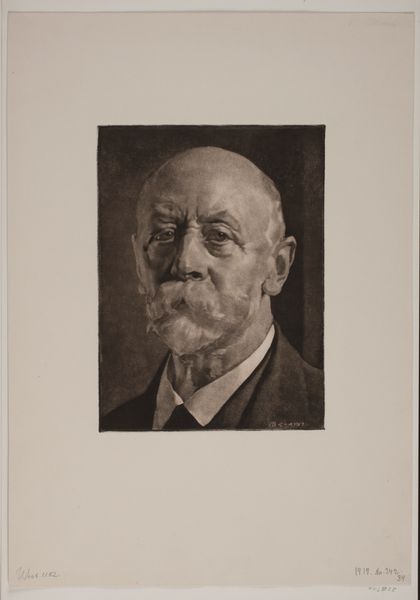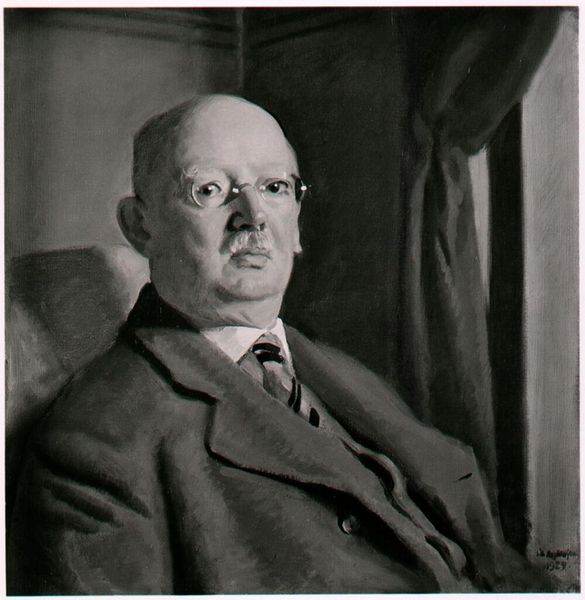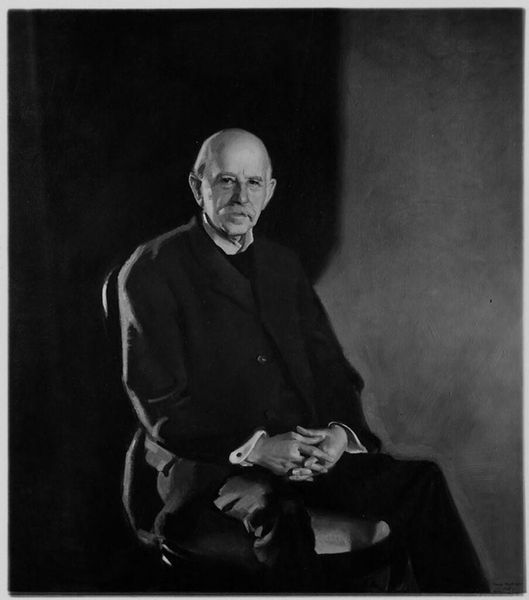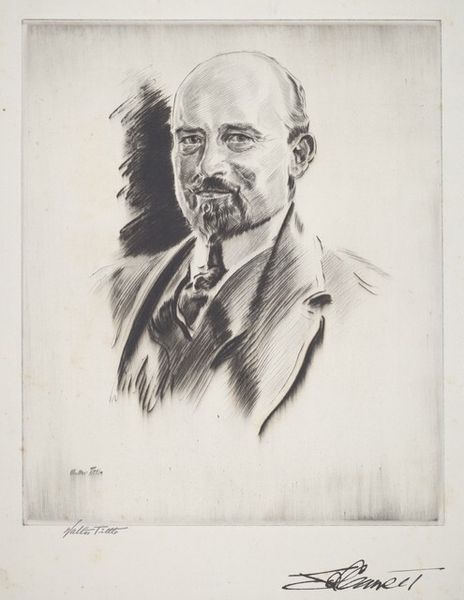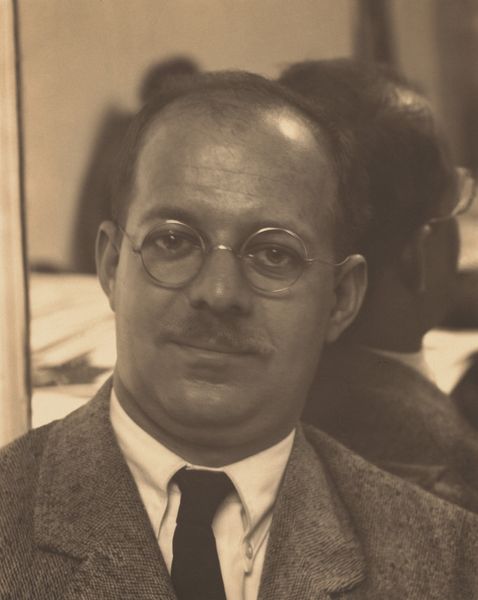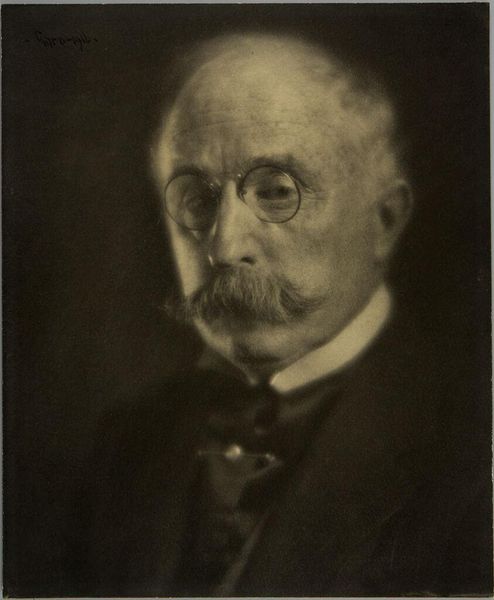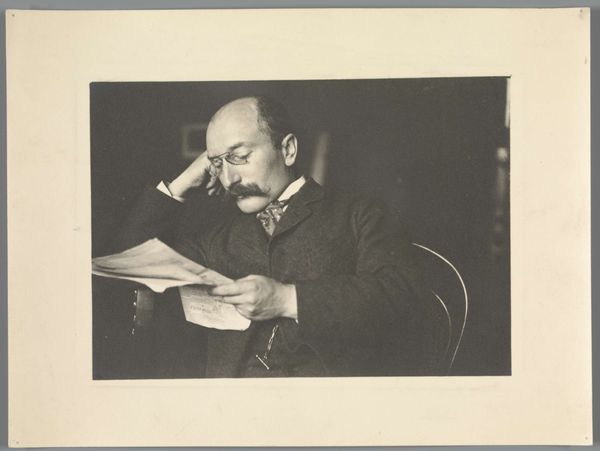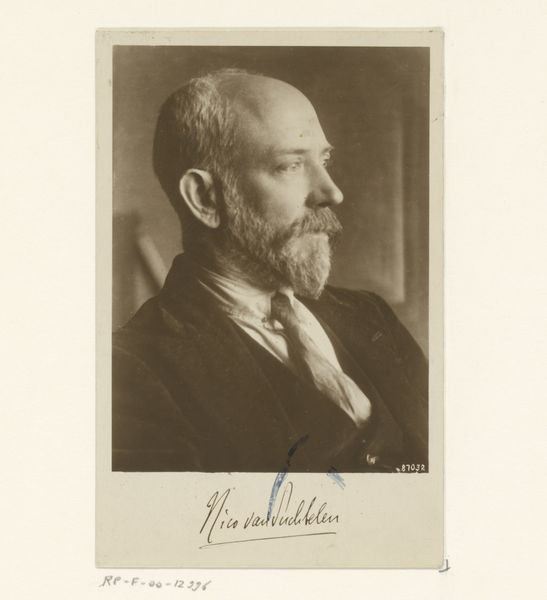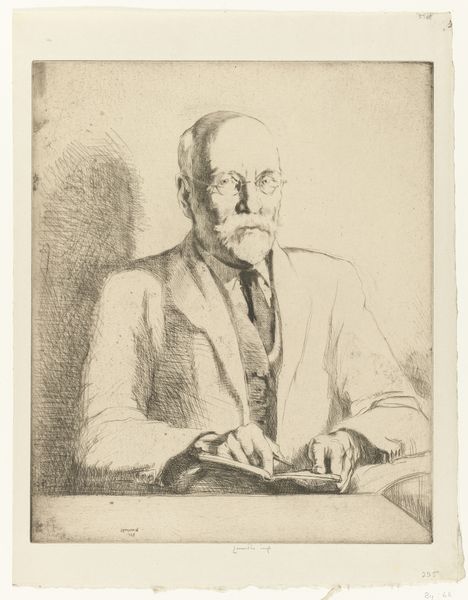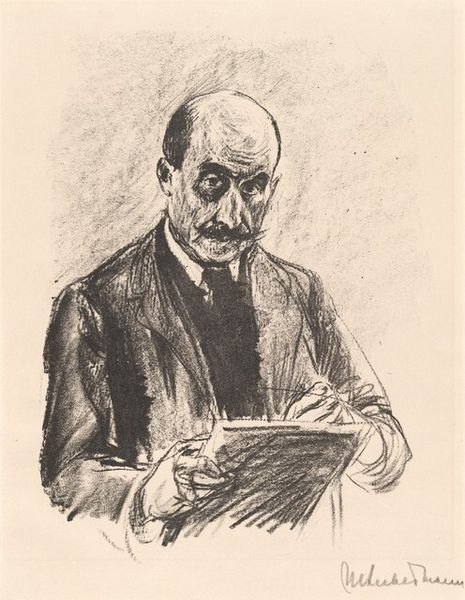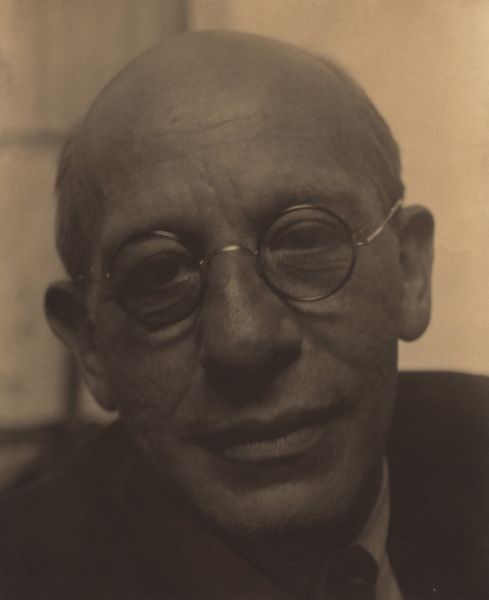
photography, gelatin-silver-print
#
portrait
#
new-objectivity
#
photography
#
gelatin-silver-print
#
realism
#
monochrome
Copyright: Public Domain
Editor: Here we have Hugo Erfurth's photographic portrait of Max Planck, made in 1938. It’s a gelatin silver print, stark and incredibly detailed. There’s a pensiveness to Planck, a gravity in his gaze. What do you read in this portrait? Curator: Well, that "gravity" you mention really resonates. There's something weighty about the way Erfurth captures Planck. This isn't just a photograph, it’s a document of a mind wrestling with… well, everything! The way the light etches lines on his face, the slight furrow of his brow – it's as if we're witnessing the very act of thinking. I wonder what was on his mind? Perhaps a lecture he had just given? Do you notice the book he is holding, slightly out of focus? Editor: I did! I hadn't thought about the lecture aspect—more the impact of everything escalating in Europe at the time, and knowing what happened to a lot of other scientists under Nazi rule... Curator: Exactly. The cultural and political climate of 1938 absolutely colours our perception, doesn't it? Makes one wonder what Erfurth was trying to convey beyond simply capturing a likeness. Think about the choice of monochrome, the deliberate composition. It’s very sober. Almost a premonition? Do you see it that way as well? Editor: Absolutely. There's a somber tone. It's a stunning, insightful piece, fraught with what I now see are very complex possibilities of interpretation. Curator: And that, my friend, is the magic of art. To see something, and through conversation, see a universe.
Comments
No comments
Be the first to comment and join the conversation on the ultimate creative platform.
